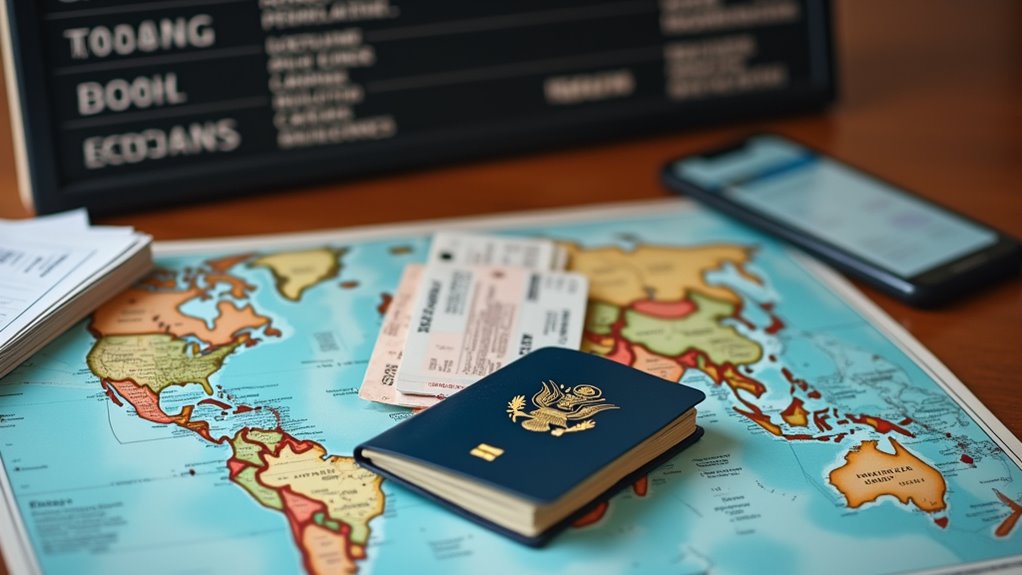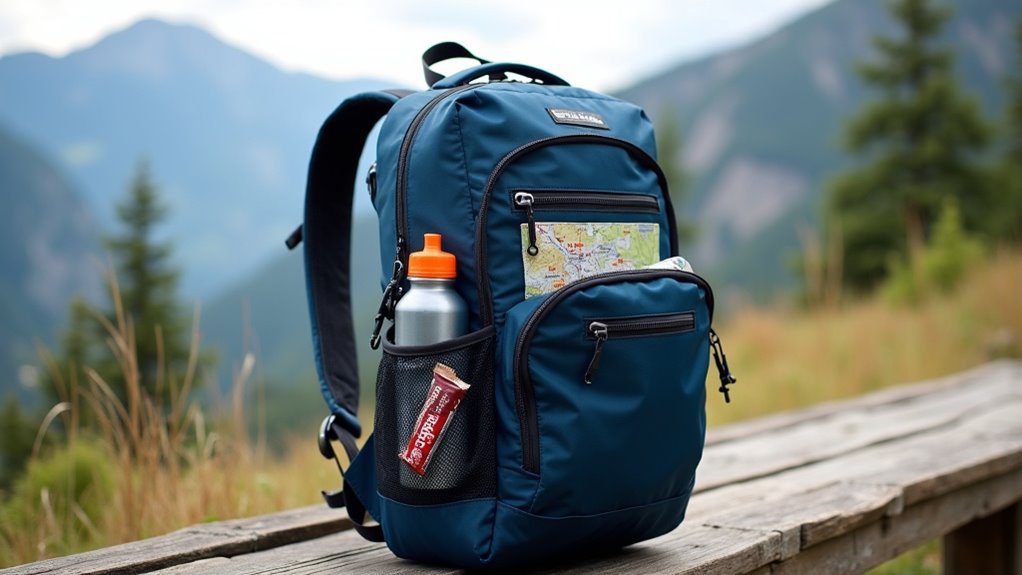You’ll need proof of onward travel when visiting countries like Peru, New Zealand, Indonesia, the Philippines, and sometimes the United Kingdom, especially if you’re on a tourist visa or certain short-term permits. Many border officials or airlines require a return or onward ticket, whether by plane, bus, or train, to guarantee you don’t overstay your welcome. Requirements can differ sharply by country and entry type, so understanding specific documentation needed will help you avoid problems at immigration. More details can clarify key differences and exceptions.
When you travel internationally, many countries require you to show proof of onward travel—a document confirming your intention and ability to leave the destination before your visa or permitted stay expires. This requirement is designed to guarantee you don’t overstay your welcome and that you have solid plans to exit the country, either by returning home or continuing to another destination. Onward ticket rules may not always be enforced, but you should be prepared to present documentation if asked.
Immigration officials often request this proof when you apply for a visa or upon your arrival. Acceptable documents include a return airline ticket, a ticket to another country, or sometimes a train or bus ticket for land crossings. Without such documentation, you risk being denied entry or even fined. For many travelers, airlines enforce entry requirements more strictly than immigration officers, so you may be asked for onward travel proof at check-in before you even depart.
Several countries enforce this rule strictly. For example, Peru requires visitors to present proof of onward travel at entry points. New Zealand frequently asks for this proof, especially if you’re entering on a tourist visa. The United Kingdom may request it, particularly for certain visa applications or if you’re coming from countries with high rates of overstays.
The Philippines mandates all visitors provide evidence they’ll leave the country within the authorized period. Indonesia also generally requires proof, especially for travelers heading to specific areas like Komodo National Park.
The types of onward travel proof accepted vary by country and mode of entry. Typically, a flight ticket showing a departure date is sufficient for air travel. For land borders, train or bus tickets are commonly accepted, while cruise ship or sailing boat reservations may serve as proof for sea travel.
Some countries will even accept booking confirmations, but you should check the specific requirements before departure.
There are exceptions and variations in enforcement. Certain nationalities or visa types might be exempt, and some countries, such as Brazil, don’t always require strict proof. However, requirements can change quickly, so research is essential.
If you lack concrete plans, booking services can provide temporary tickets, but relying on these for the sole purpose of passing immigration is risky and not recommended. Ultimately, understanding and preparing the appropriate documentation in advance guarantees you avoid travel disruptions and meet legal entry requirements.









